- Casey

John Doe
Answered on 2:41 am
400G-FR4 / 400G-LR4: These transceivers use duplex LC connectors. The FR4 and LR4 transceivers use WDM (wavelength division multiplexing) to allow the use of two fibers instead of eight.

400G-DR4 / 400G-XDR4 / 400G-PLR4: These transceivers use a MPO-12 connector since the DR4 standard splits the 400Gbps signal into four parallel 100Gbps channels.

400G-BIDI (400G-SRBD): Bi-directional transceivers typically use LC connectors as they work by simultaneously transmitting and receiving data over one fiber.

400G-SR8: This transceiver uses MPO-16 connectors, as the SR8 standard splits the 400Gbps signal into eight parallel 50Gbps channels.

400G-2FR4: This transceiver would typically use duplex LC connectors. It’s a two-lane 400GBASE-FR4 variant that uses two wavelengths on a single fiber, enabling duplex LC operation.

People Also Ask
InfiniBand vs. Ethernet: The Battle Between Broadcom and NVIDIA for AI Scale-Out Dominance
The Core Battle in High-Performance Computing Interconnects Ethernet is poised to reclaim mainstream status in scale-out data centers, while InfiniBand continues to maintain strong momentum in the high-performance computing (HPC) and AI training sectors. Broadcom and NVIDIA are fiercely competing for market leadership. As artificial intelligence models grow exponentially in
From AI Chips to the Ultimate CPO Positioning Battle: NVIDIA vs. Broadcom Technology Roadmap Showdown
In the era driven by artificial intelligence (AI) and machine learning, global data traffic is multiplying exponentially. Data center servers and switches are rapidly transitioning from 200G and 400G connections to 800G, 1.6T, and potentially even 3.2T speeds. Market research firm TrendForce predicts that global shipments of optical transceiver modules
H3C S6550XE-HI Series 25G Ethernet Switch: High-Performance 25G/100G Solution for Campus and Metro Networks
The H3C S6550XE-HI series is a cutting-edge, high-performance, high-density 25G/100G Ethernet switch developed by H3C using industry-leading professional ASIC technology. Designed as a next-generation Layer 3 Ethernet switch, it delivers exceptional security, IPv4/IPv6 dual-stack management and forwarding, and full support for static routing protocols as well as dynamic routing protocols including
Switching NVIDIA ConnectX Series NICs from InfiniBand to Ethernet Mode: A Step-by-Step Guide
The NVIDIA ConnectX Virtual Protocol Interconnect (VPI) series network interface cards (NICs)—including models such as ConnectX-4, ConnectX-5, ConnectX-6, ConnectX-7, and ConnectX-8 (commonly abbreviated as CX-4/5/6/7/8)—represent a rare class of dual-mode adapters in the industry. A single card enables seamless switching between InfiniBand (IB) and Ethernet physical networks without hardware replacement.
Broadcom Launches the Industry’s First 800G AI Ethernet NIC: Thor Ultra, Fully Compliant with UEC Standards
In a groundbreaking move for AI networking, Broadcom has unveiled the Thor Ultra, the industry’s first 800G AI Ethernet network interface card (NIC) chip that fully complies with the Ultra Ethernet Consortium (UEC) specifications. This innovative PCIe card enables seamless interconnections among hundreds of thousands of diverse XPUs, powering next-generation
Essential Fiber Cleaners and Tools from FiberMall: Your Complete Guide to Maintaining High-Performance Networks
In the fast-paced world of data centers, cloud computing, enterprise networks, and telecommunications, reliable fiber optic connections are the backbone of seamless data transmission. However, even the most advanced fiber optic infrastructure can falter if connectors are contaminated with dust, oils, or debris. This is where high-quality fiber cleaners and
Related Articles
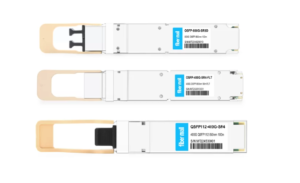
800G SR8 and 400G SR4 Optical Transceiver Modules Compatibility and Interconnection Test Report
Version Change Log Writer V0 Sample Test Cassie Test Purpose Test Objects:800G OSFP SR8/400G OSFP SR4/400G Q112 SR4. By conducting corresponding tests, the test parameters meet the relevant industry standards, and the test modules can be normally used for Nvidia (Mellanox) MQM9790 switch, Nvidia (Mellanox) ConnectX-7 network card and Nvidia (Mellanox) BlueField-3, laying a foundation for

InfiniBand vs. Ethernet: The Battle Between Broadcom and NVIDIA for AI Scale-Out Dominance
The Core Battle in High-Performance Computing Interconnects Ethernet is poised to reclaim mainstream status in scale-out data centers, while InfiniBand continues to maintain strong momentum in the high-performance computing (HPC) and AI training sectors. Broadcom and NVIDIA are fiercely competing for market leadership. As artificial intelligence models grow exponentially in
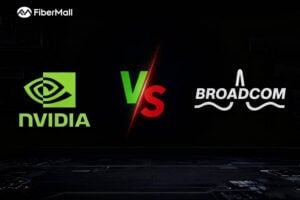
From AI Chips to the Ultimate CPO Positioning Battle: NVIDIA vs. Broadcom Technology Roadmap Showdown
In the era driven by artificial intelligence (AI) and machine learning, global data traffic is multiplying exponentially. Data center servers and switches are rapidly transitioning from 200G and 400G connections to 800G, 1.6T, and potentially even 3.2T speeds. Market research firm TrendForce predicts that global shipments of optical transceiver modules
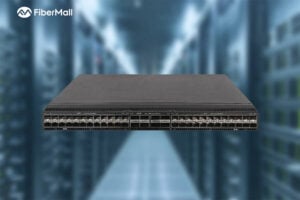
H3C S6550XE-HI Series 25G Ethernet Switch: High-Performance 25G/100G Solution for Campus and Metro Networks
The H3C S6550XE-HI series is a cutting-edge, high-performance, high-density 25G/100G Ethernet switch developed by H3C using industry-leading professional ASIC technology. Designed as a next-generation Layer 3 Ethernet switch, it delivers exceptional security, IPv4/IPv6 dual-stack management and forwarding, and full support for static routing protocols as well as dynamic routing protocols including
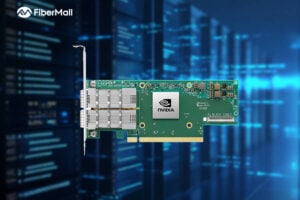
Switching NVIDIA ConnectX Series NICs from InfiniBand to Ethernet Mode: A Step-by-Step Guide
The NVIDIA ConnectX Virtual Protocol Interconnect (VPI) series network interface cards (NICs)—including models such as ConnectX-4, ConnectX-5, ConnectX-6, ConnectX-7, and ConnectX-8 (commonly abbreviated as CX-4/5/6/7/8)—represent a rare class of dual-mode adapters in the industry. A single card enables seamless switching between InfiniBand (IB) and Ethernet physical networks without hardware replacement.
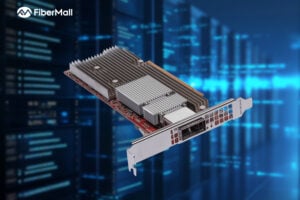
Broadcom Launches the Industry’s First 800G AI Ethernet NIC: Thor Ultra, Fully Compliant with UEC Standards
In a groundbreaking move for AI networking, Broadcom has unveiled the Thor Ultra, the industry’s first 800G AI Ethernet network interface card (NIC) chip that fully complies with the Ultra Ethernet Consortium (UEC) specifications. This innovative PCIe card enables seamless interconnections among hundreds of thousands of diverse XPUs, powering next-generation

Essential Fiber Cleaners and Tools from FiberMall: Your Complete Guide to Maintaining High-Performance Networks
In the fast-paced world of data centers, cloud computing, enterprise networks, and telecommunications, reliable fiber optic connections are the backbone of seamless data transmission. However, even the most advanced fiber optic infrastructure can falter if connectors are contaminated with dust, oils, or debris. This is where high-quality fiber cleaners and
Related posts:
- If the Server’s Module is OSFP and the Switch’s is QSFP112, can it be Linked by Cables to Connect Data?
- Can I Plug an OSFP Module into a QSFP-DD Port, or a QSFP-DD Module into an OSFP Port?
- What is the Difference Between 400G-BIDI, 400G-SRBD and 400G-SR4.2?
- What are the Pros and Cons of Using OSFPs or QSFP-DDs?
